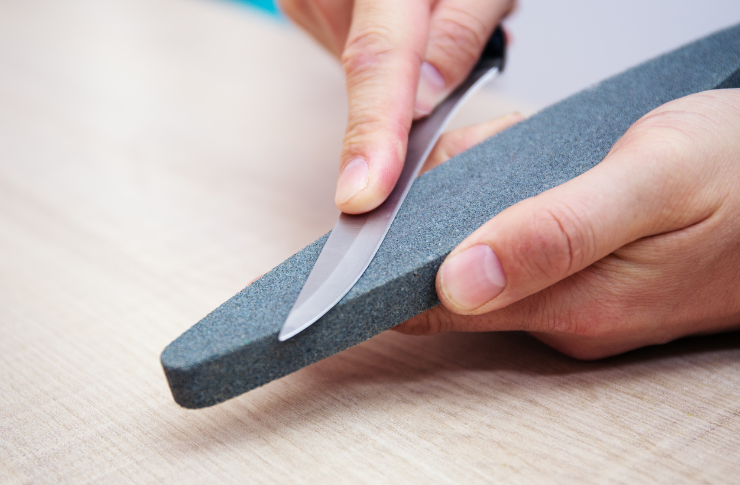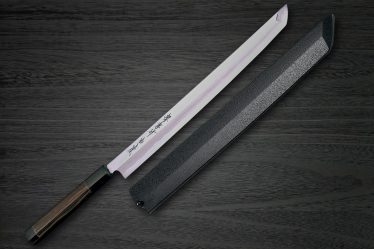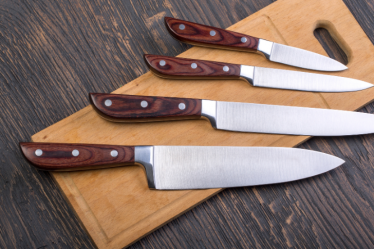
Sharpening knives is essential for maintaining their performance, but not all knives are the same. Depending on their type and construction, knives require specific sharpening techniques. Let’s explore the main types of knives and the precautions to consider when sharpening them.
Chef’s Knife:
Sharpening Angle: Typically, a 15-20° angle is ideal.
Caution: Ensure a consistent angle throughout, from heel to tip, to maintain an even edge.
Paring Knife:
Sharpening Angle: A 15-20° angle is generally suitable.
Caution: Due to its small size, be extra careful with your fingers and ensure they are always behind the guard of the sharpening tool.
Serrated Knife (e.g., Bread Knife):
Sharpening Angle: Varies depending on serration size.
Caution: Only sharpen the beveled side of the blade. Use a tapered sharpening rod that fits the size of the serrations. Avoid sharpening the flat side.
Japanese Knives (e.g., Santoku, Nakiri):
Sharpening Angle: Often a more acute angle, around 10-15°.
Caution: Due to their thin and delicate blades, use gentle pressure and ensure the sharpening stone is wet to minimize friction.
Boning and Fillet Knives:
Sharpening Angle: Typically, a 12-15° angle.
Caution: Given their flexibility, maintain consistent pressure and angle to avoid uneven sharpening.
Cleavers:
Sharpening Angle: A more obtuse angle, around 25-30°, given the heavy-duty nature.
Caution: Despite being robust, cleavers require a sharp edge. Ensure the entire blade, from heel to tip, gets evenly sharpened.
Pocket and Folding Knives:
Sharpening Angle: Usually between 15-25°, depending on the specific knife.
Caution: Ensure the knife is securely open and won’t fold during the sharpening process. Use a clamp or sharpening guide if needed.
General Tips:
Always start with a coarser grit stone and progress to finer grits for a polished edge.
Continually check the blade for a “burr” — a slight, rough edge that forms on the opposite side of the knife being sharpened. Once a burr forms across the entire length, it’s time to switch sides or move to a finer grit.
Use lubrication, like water or honing oil, on stones to prevent excessive wear and reduce heat from friction.
Store knives properly after sharpening to maintain their edge and ensure safety.
Conclusion
Proper sharpening not only ensures a knife’s performance but also extends its lifespan. By understanding the specific needs and cautions associated with different types of knives, one can achieve the best results and ensure a safer, more efficient cutting experience.


